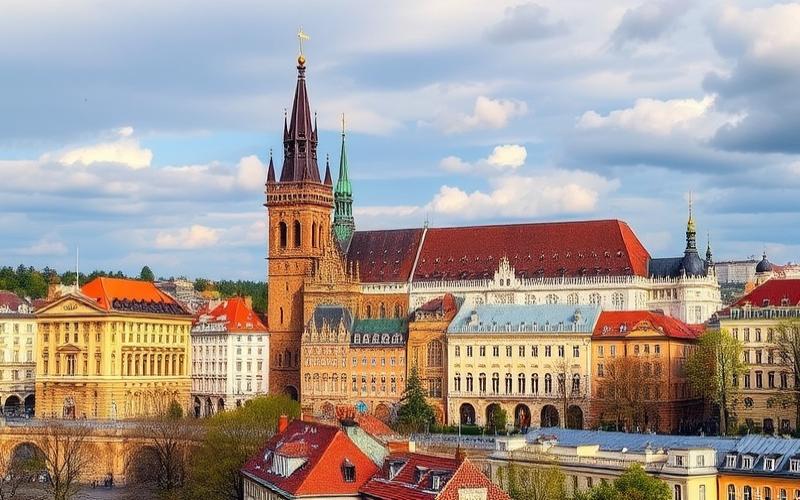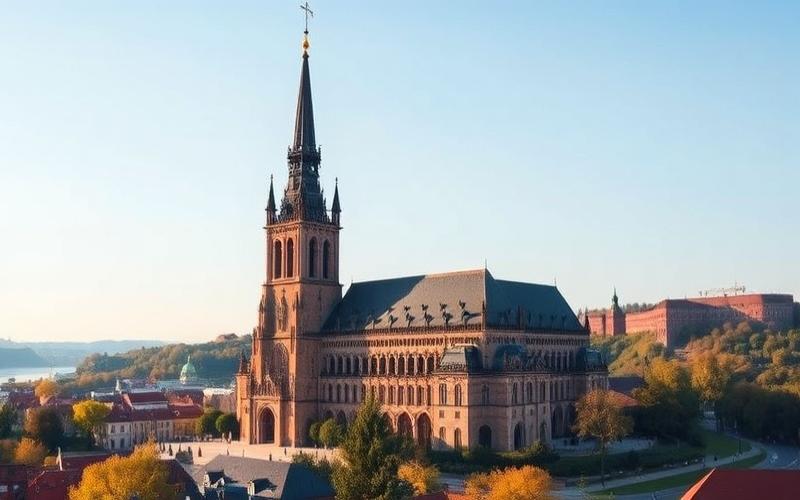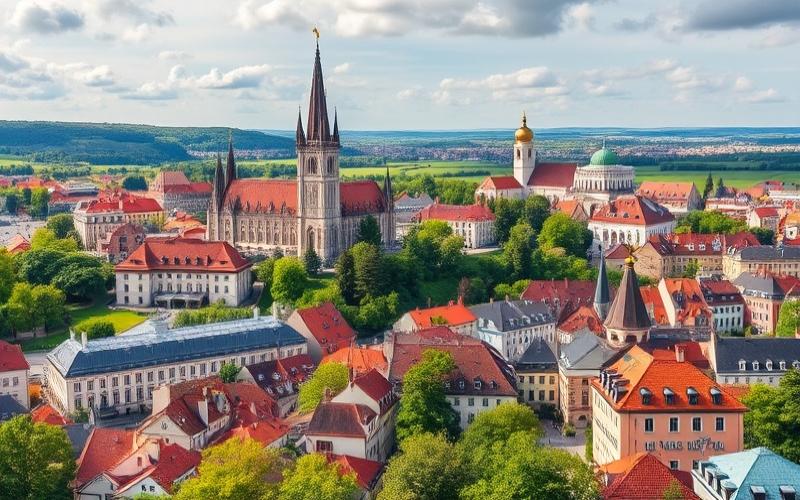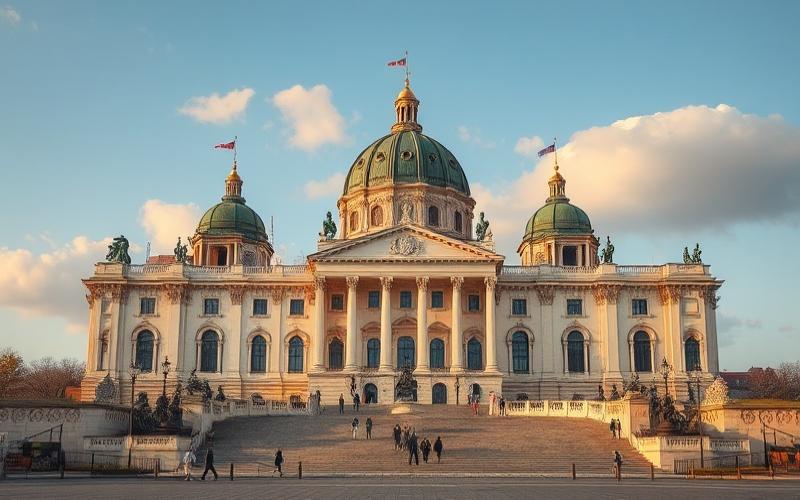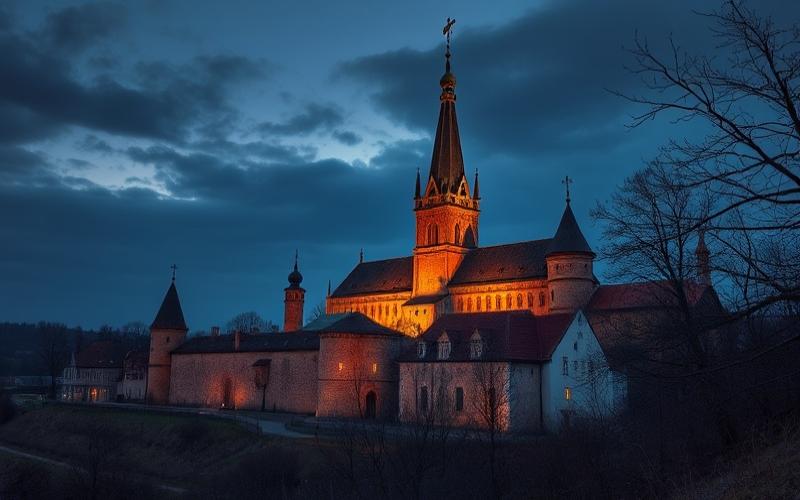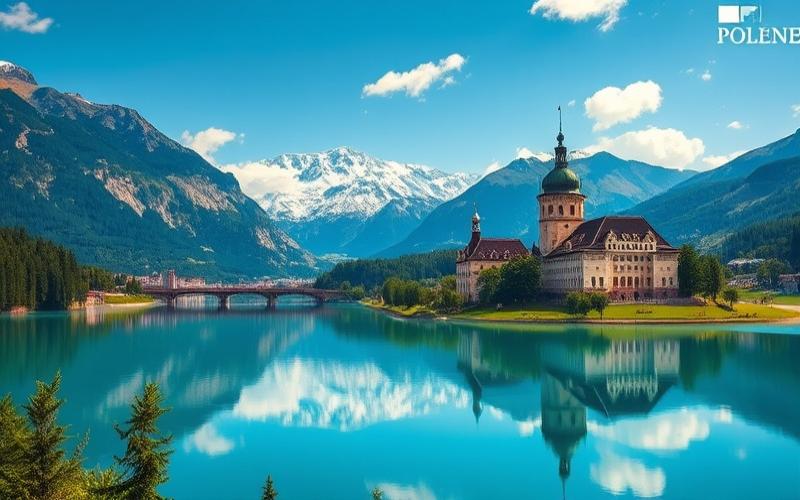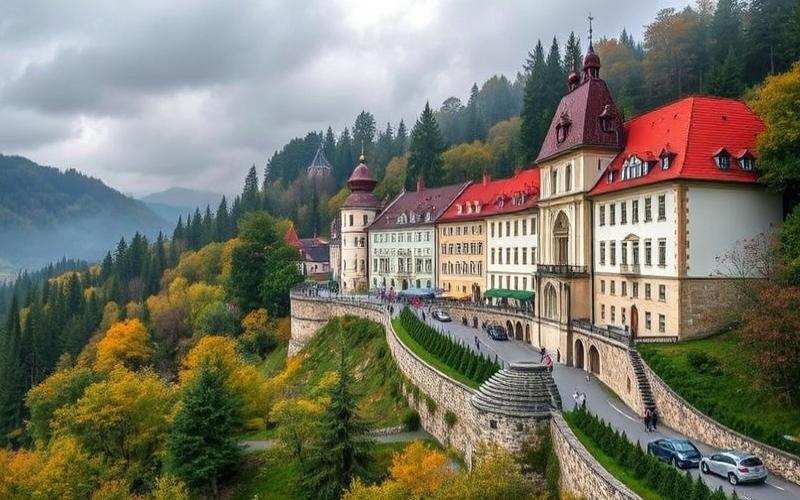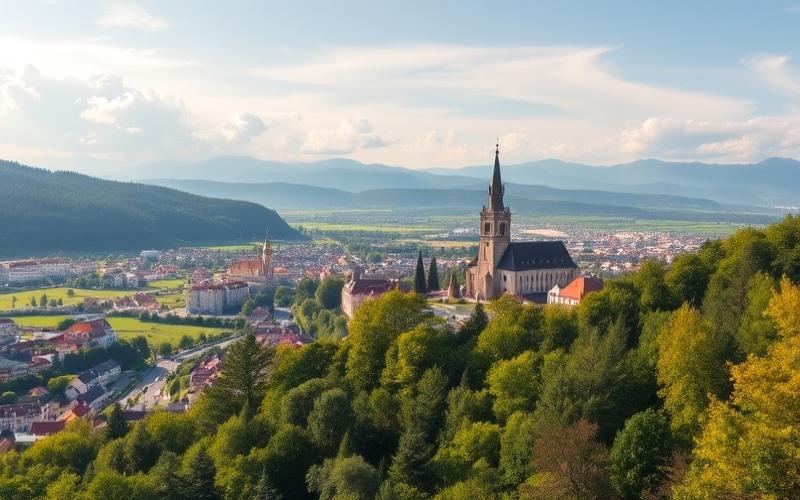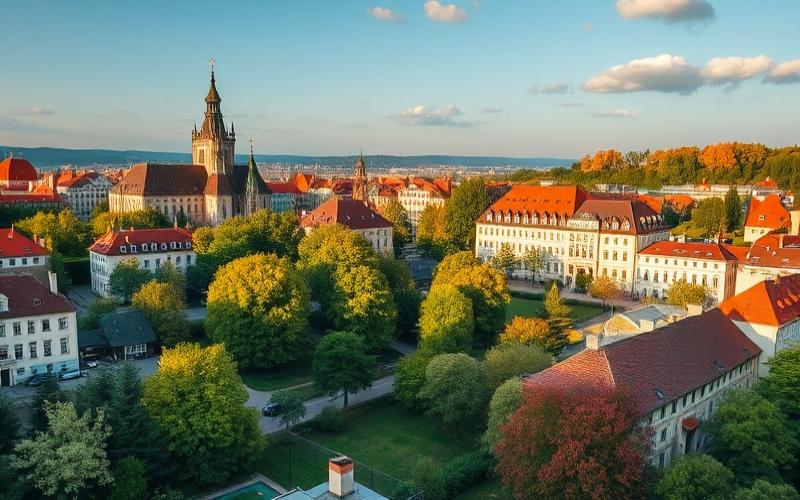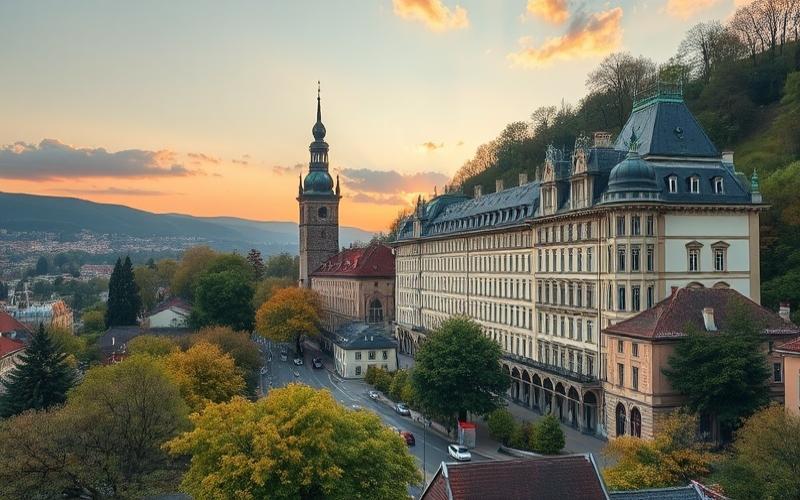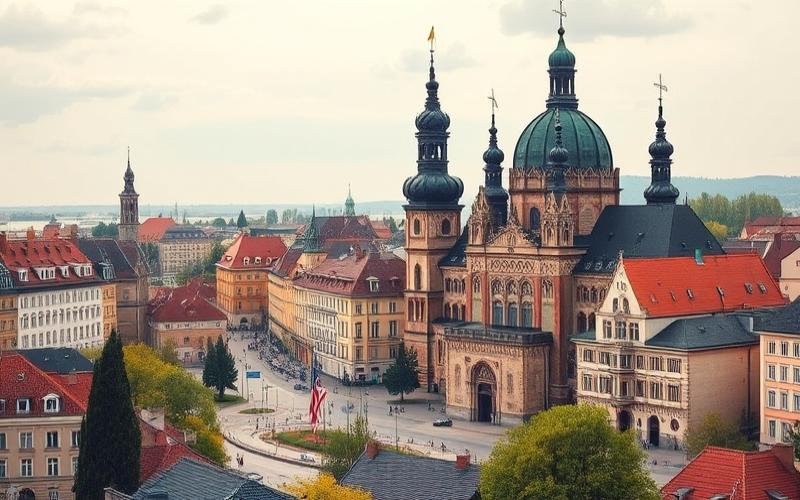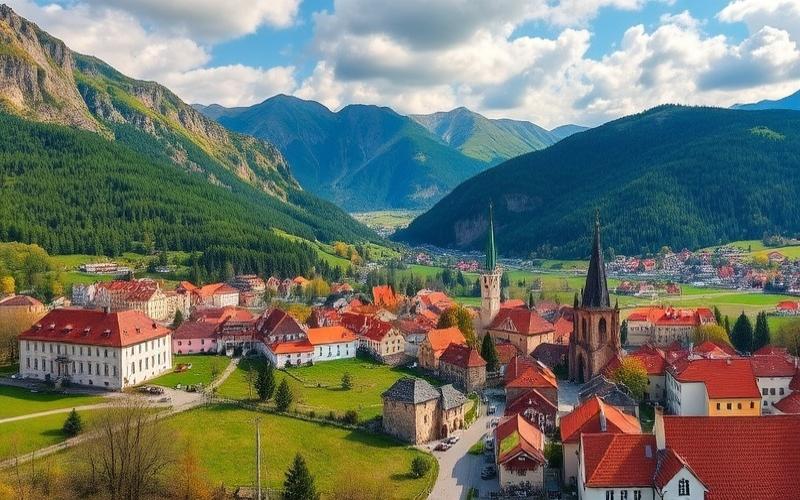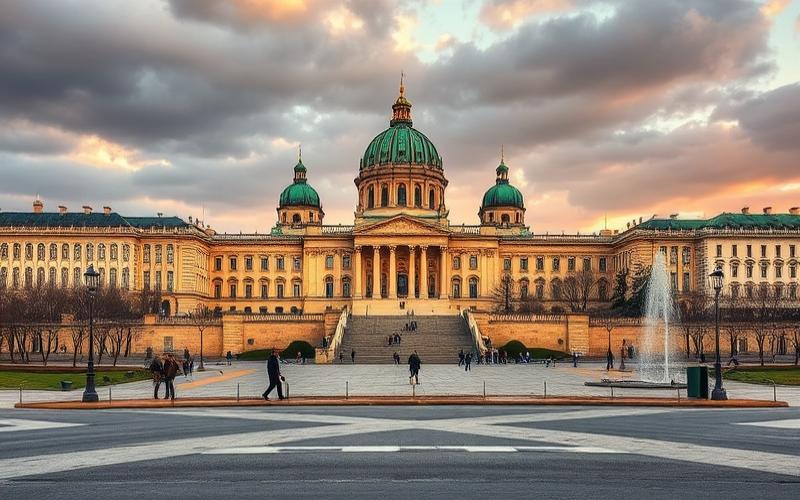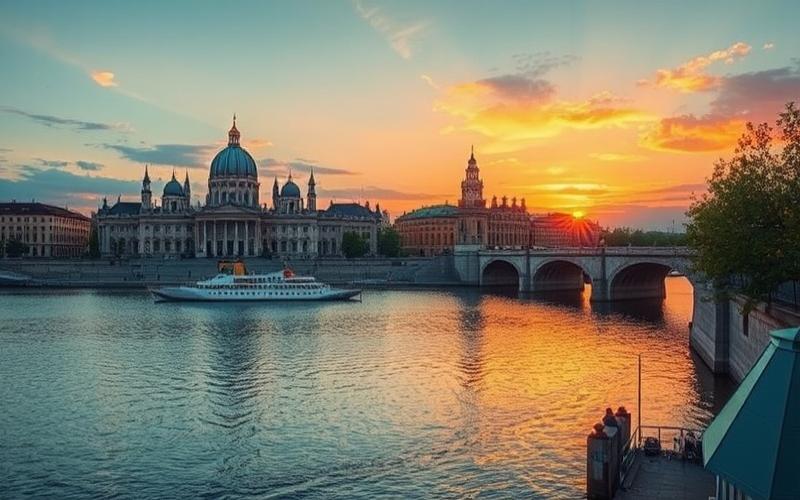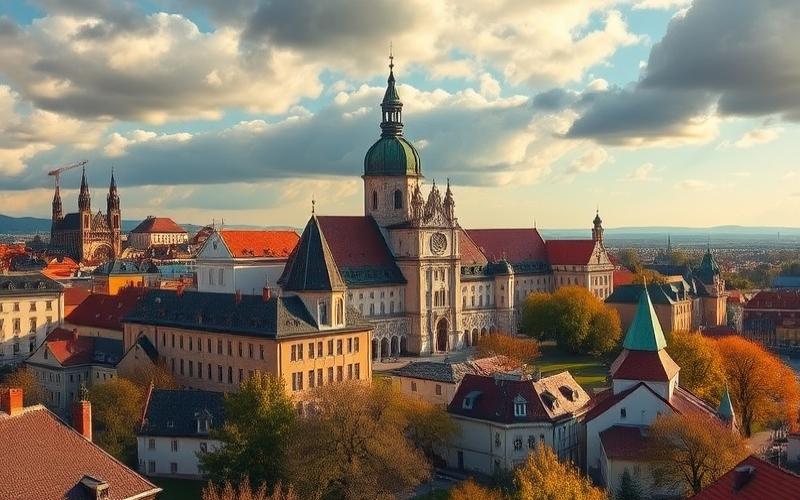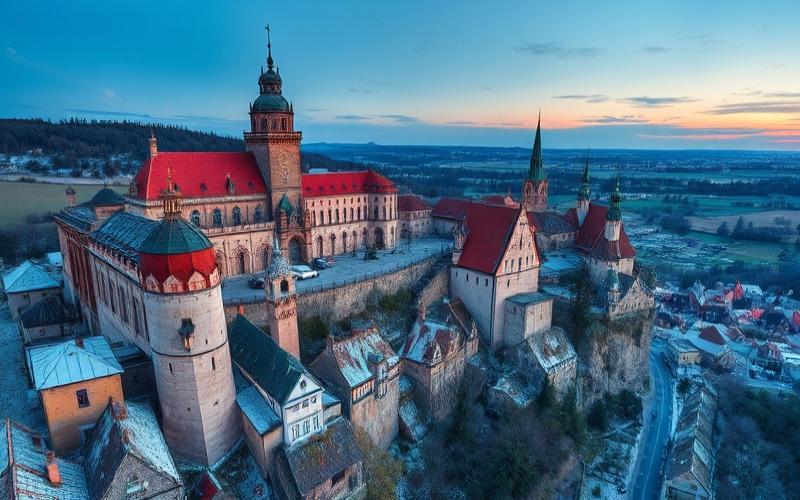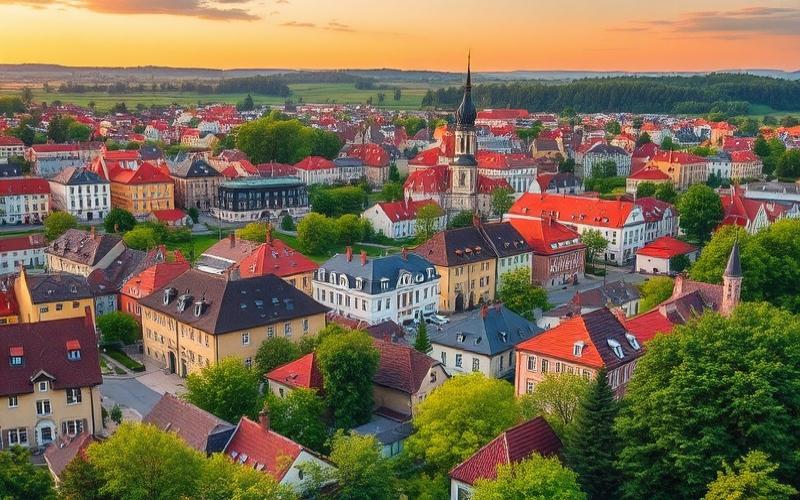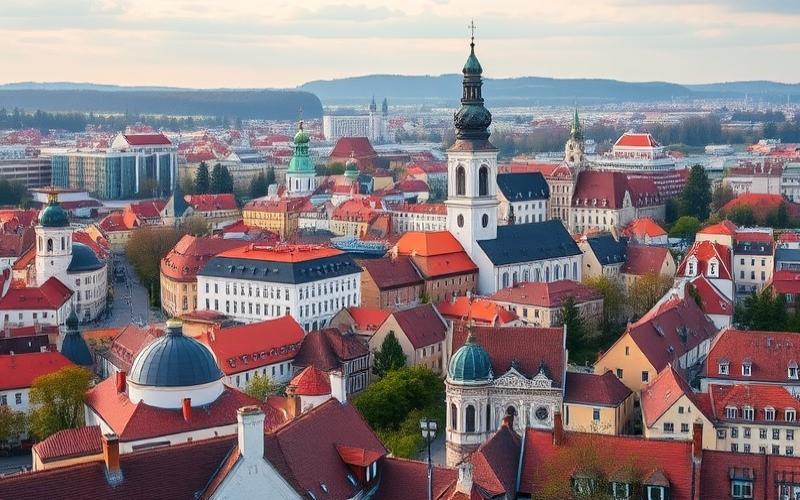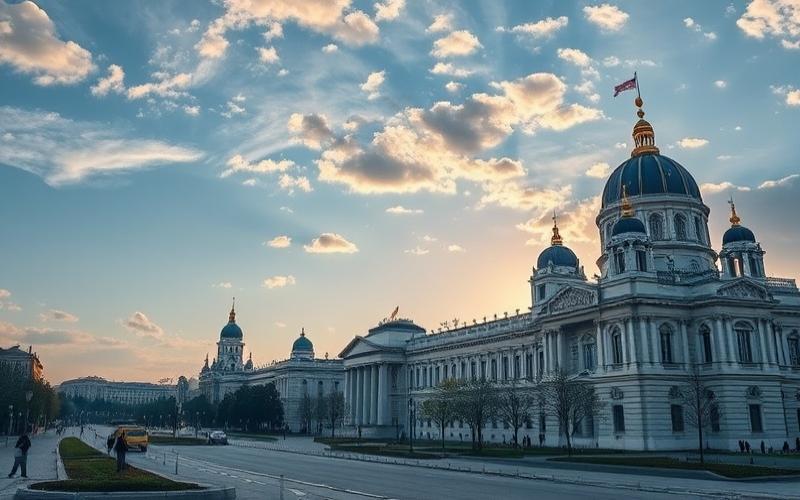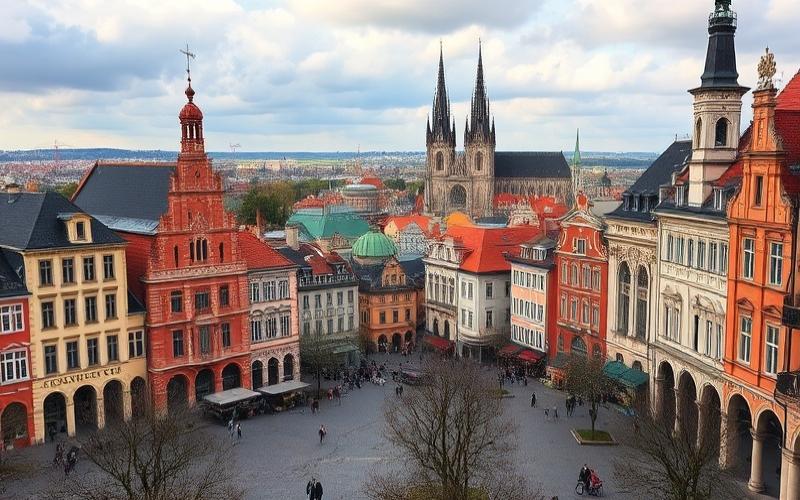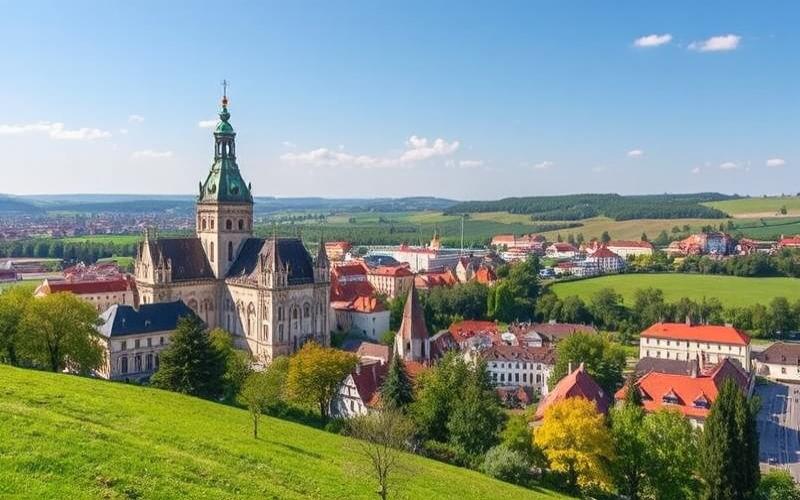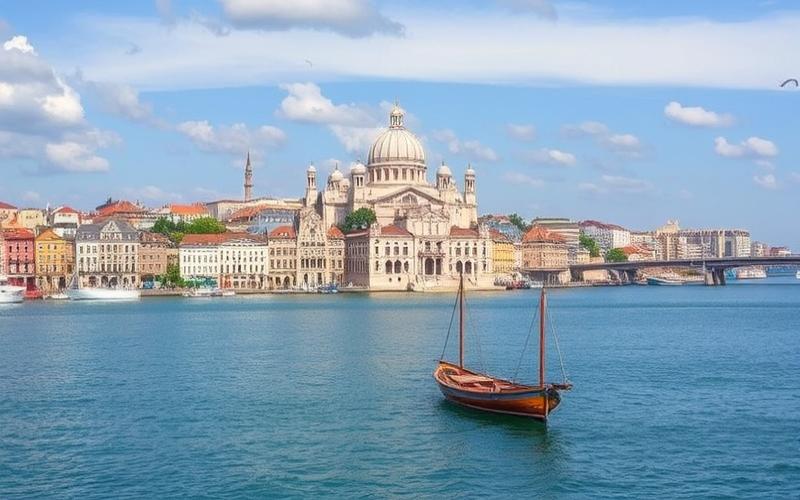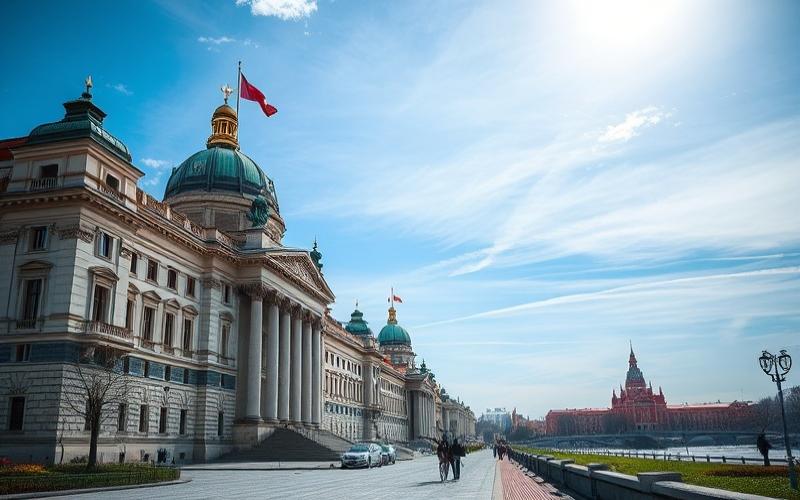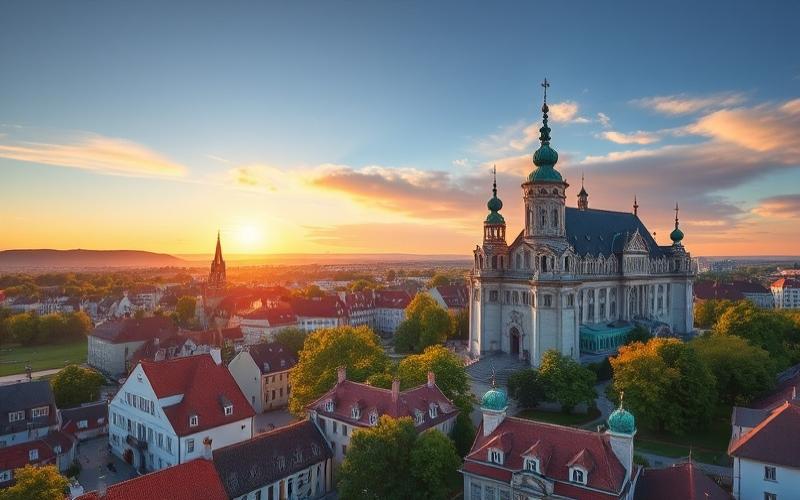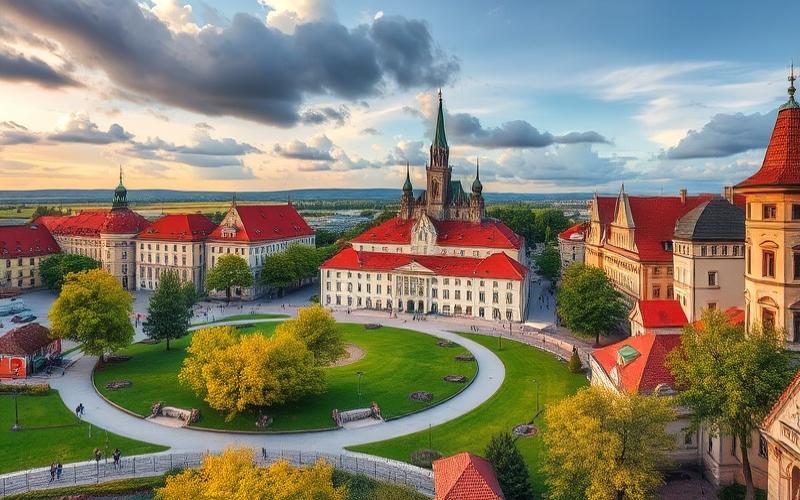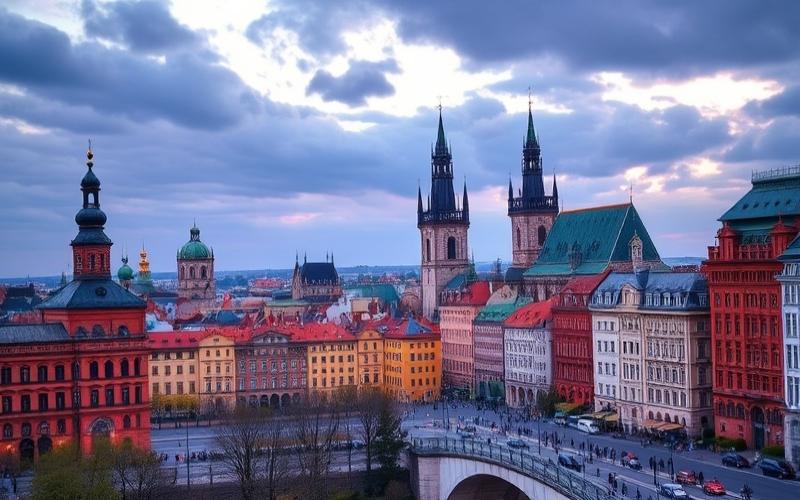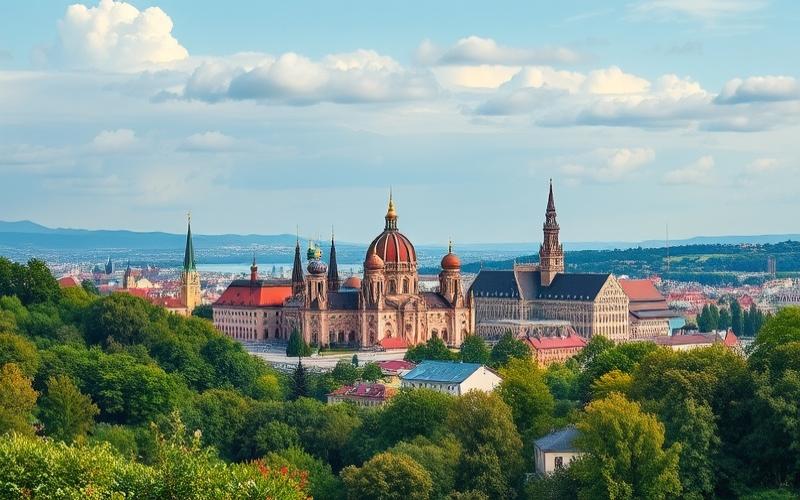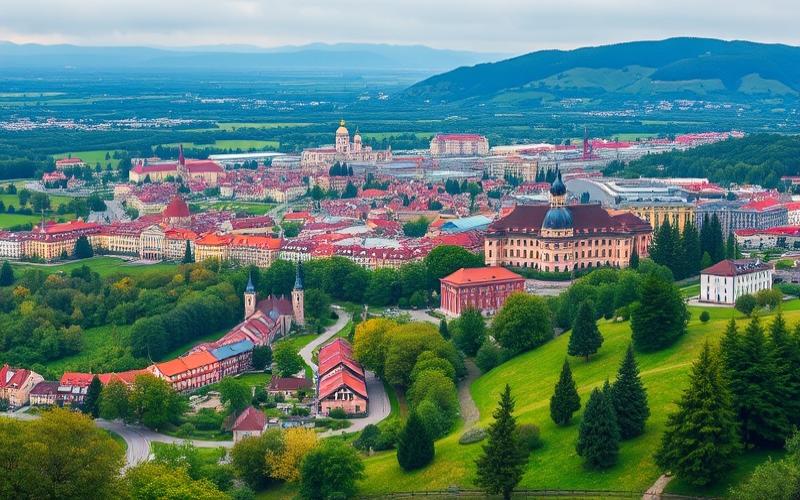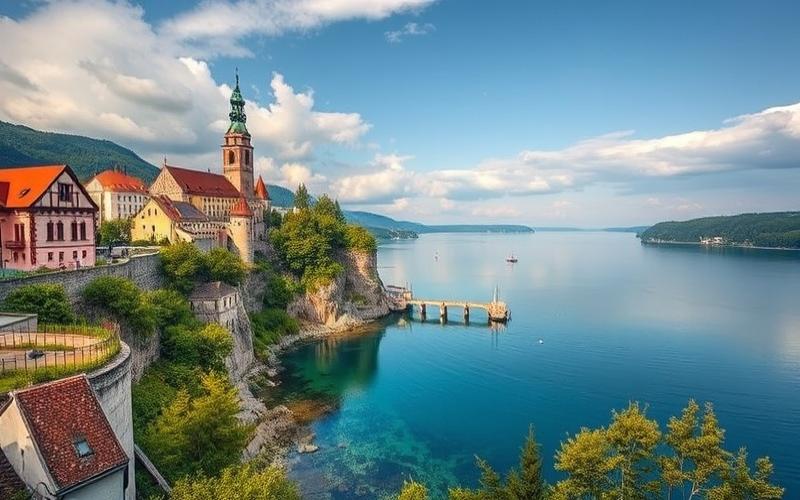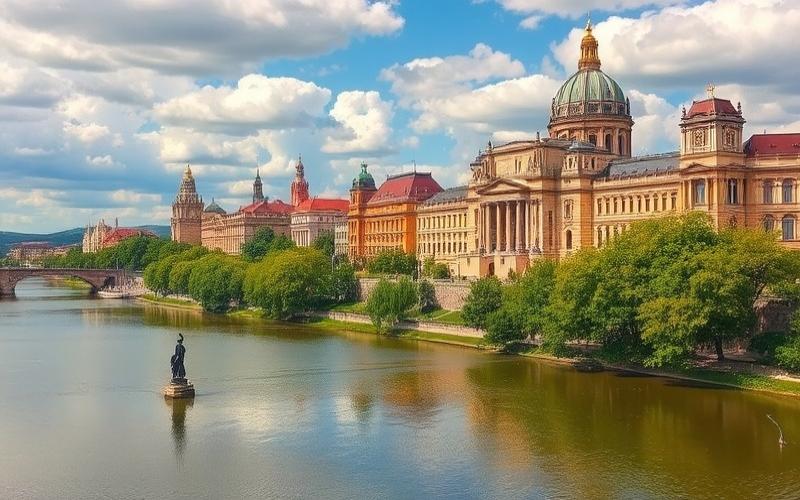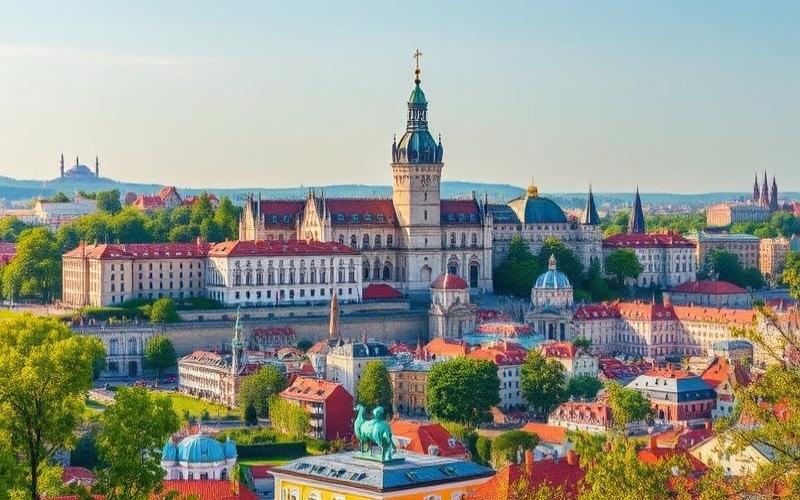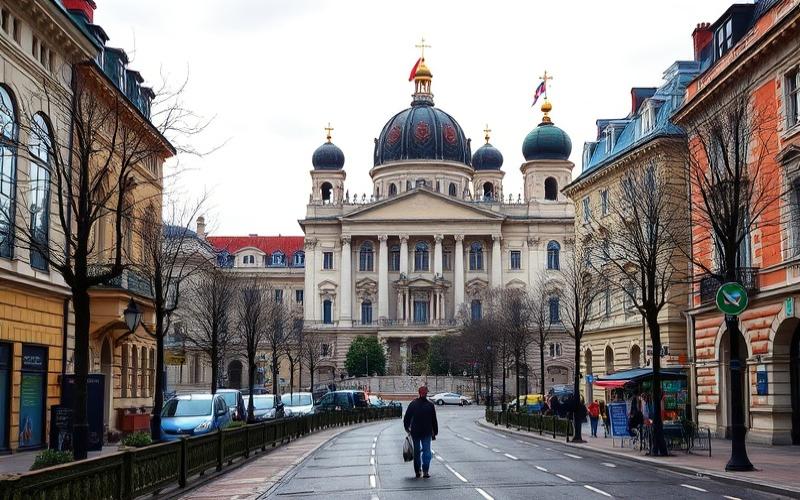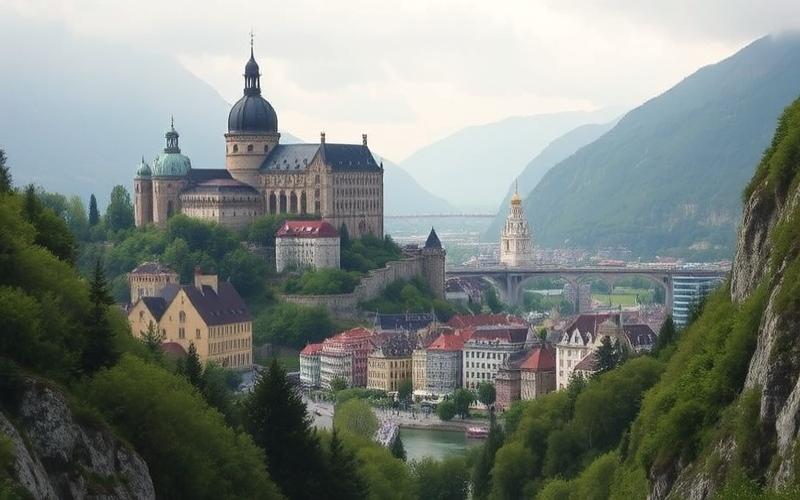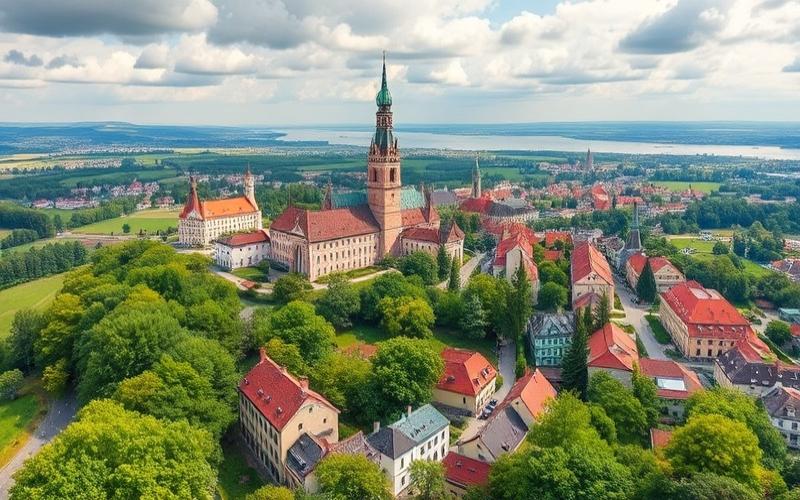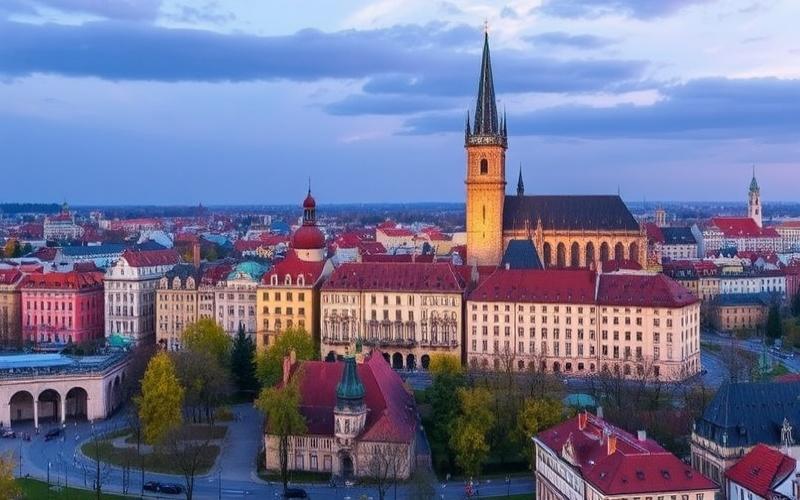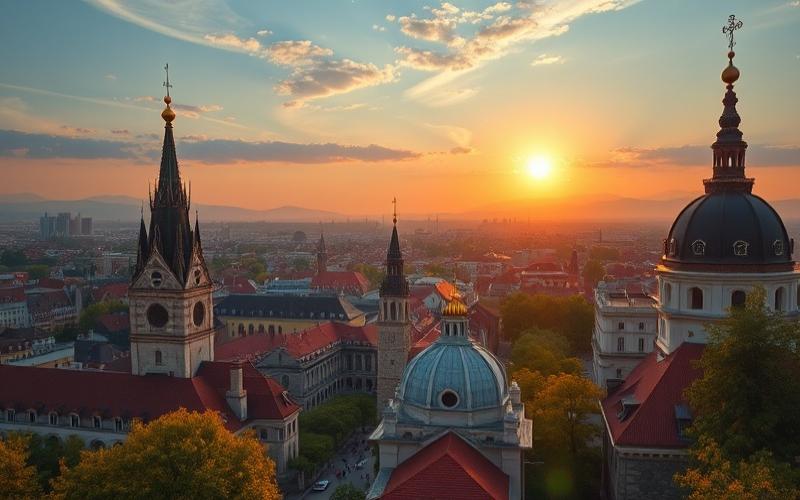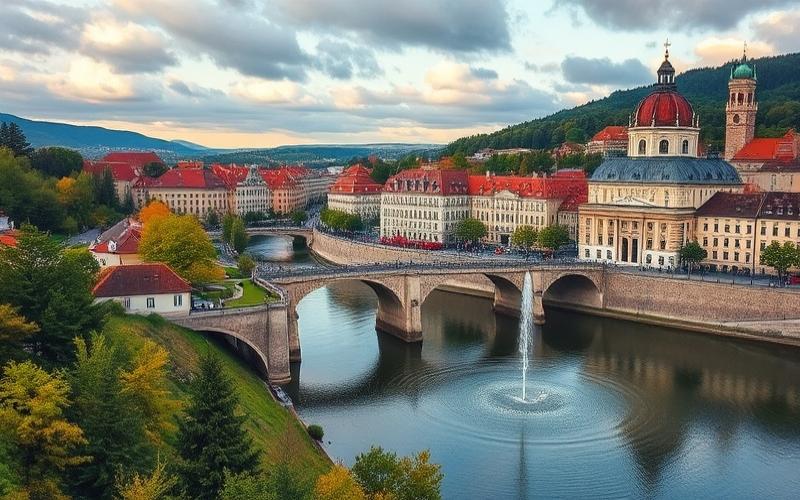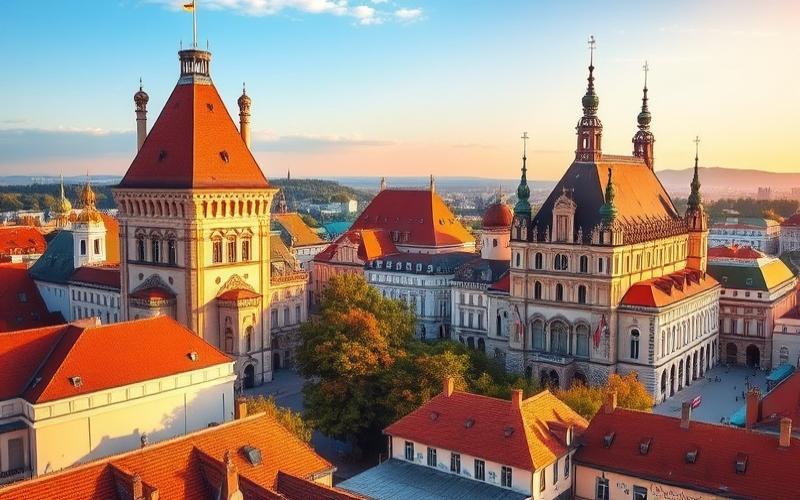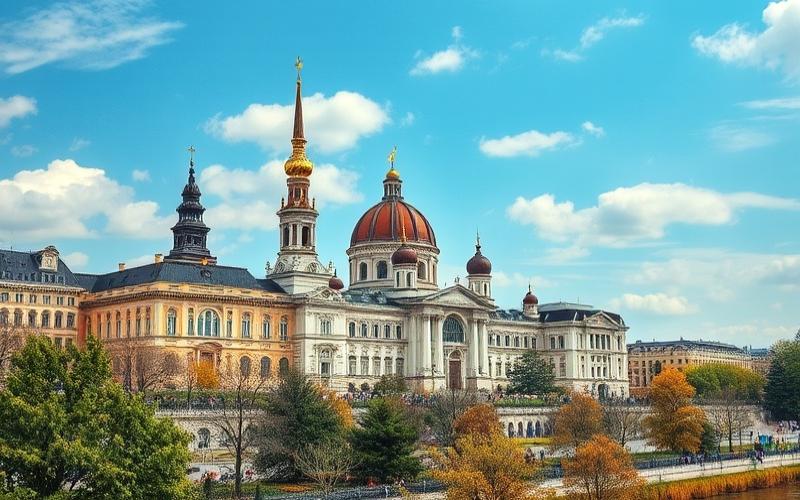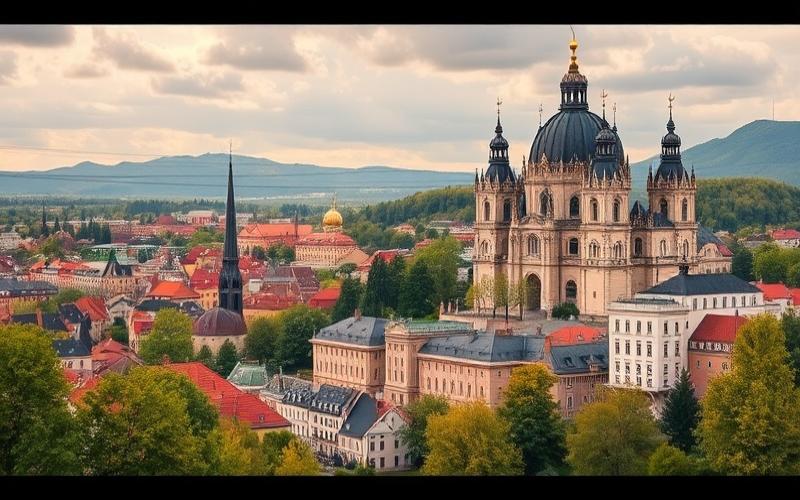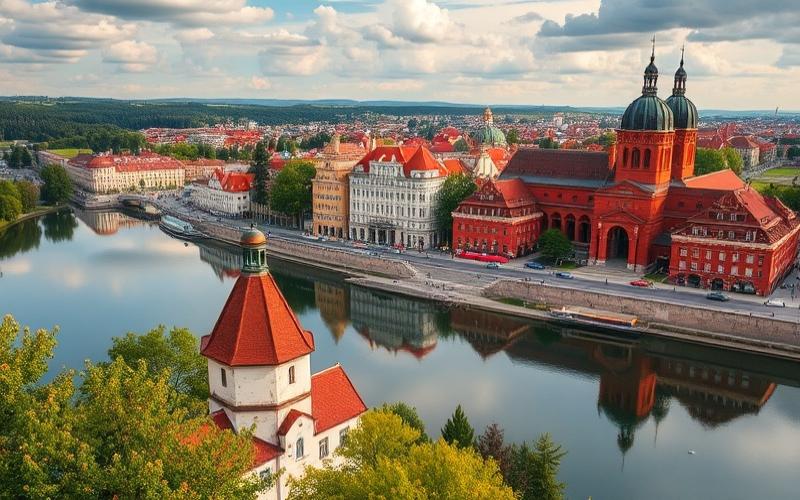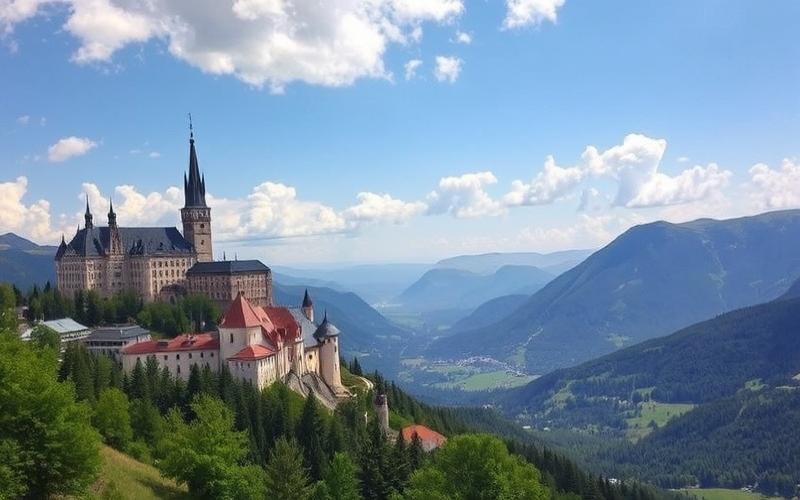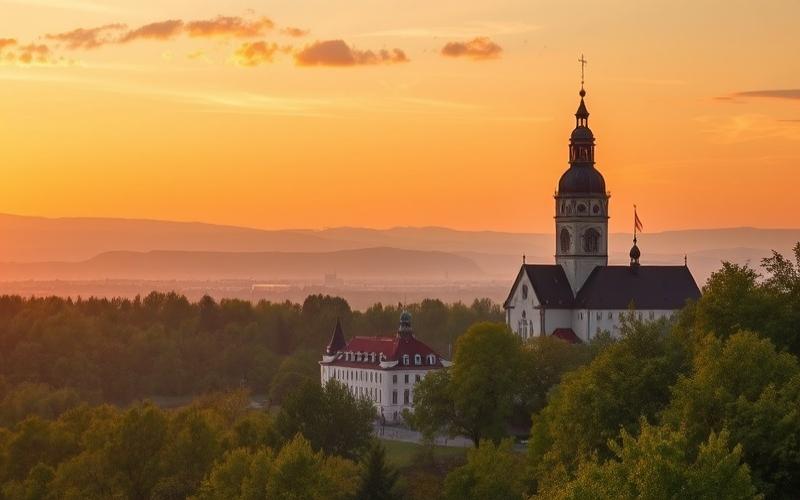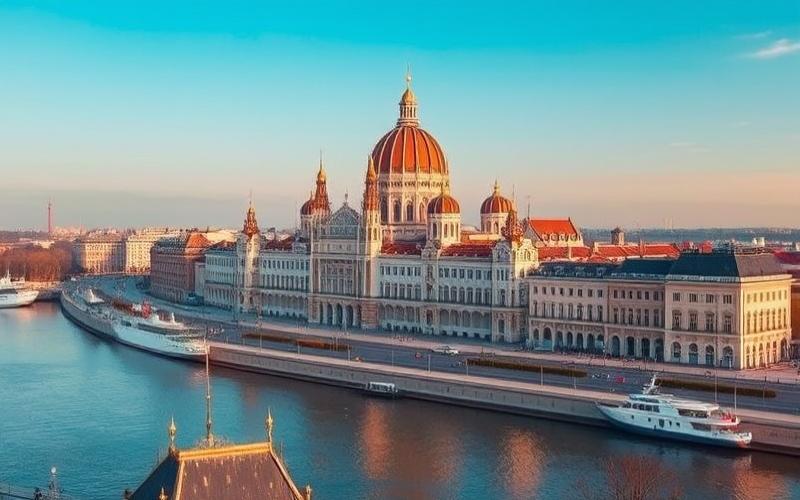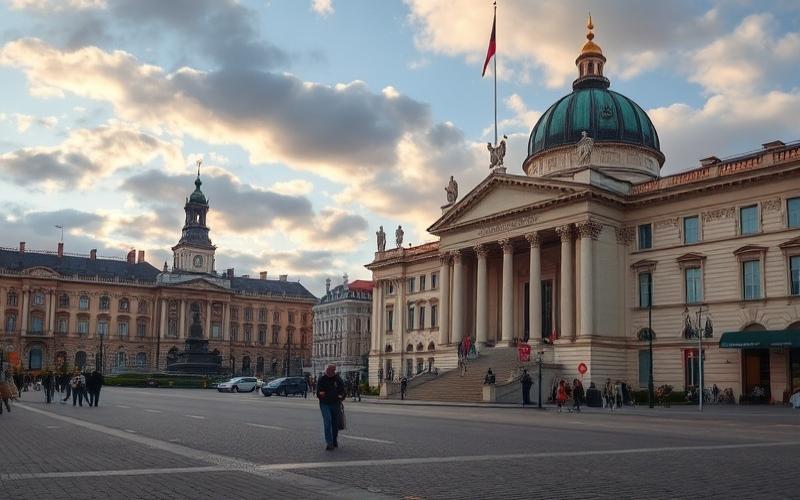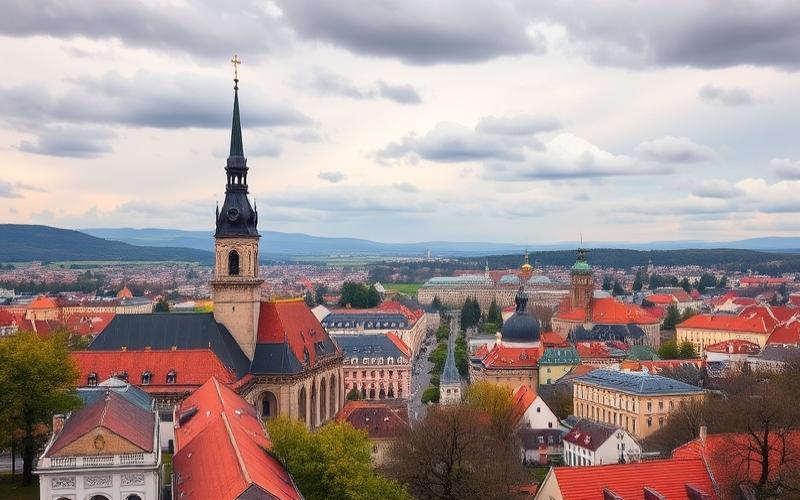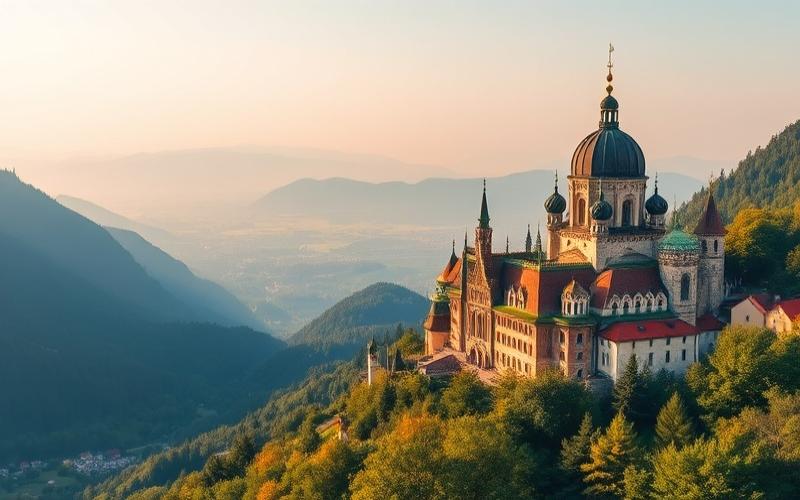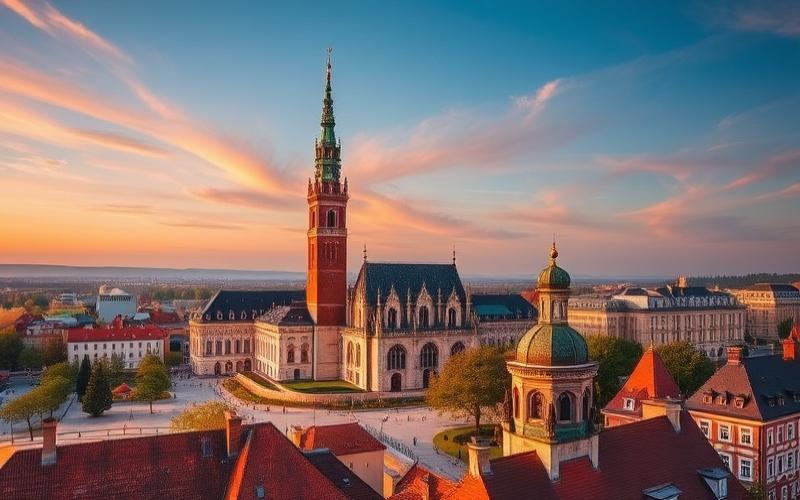
 Published on and written by Cyril Jarnias
Published on and written by Cyril Jarnias
The Future of Polish Cities in Transformation
The future of Polish cities is undergoing significant transformation with a series of ambitious urban development projects that promise to reshape their landscape. While infrastructure modernization continues to be a priority, these initiatives aim to integrate sustainable solutions and cutting-edge technologies to address contemporary challenges such as climate change and population growth.
From Warsaw to Kraków, these metropolitan areas are embracing innovative concepts like green mobility, smart urban planning, and public space revitalization, promising citizens an improved quality of life.
These developments, supported by local and international investments, reaffirm Poland’s commitment to becoming a leader in sustainable urban reconstruction in the region.
Urban Transformations in Poland: What Horizons for Tomorrow?
Poland is currently experiencing urban transformation marked by infrastructure modernization while valuing its historical heritage, driven by national and European policies focused on sustainability and innovation.
Urban Planning Strategies and Heritage Preservation
- Adaptive Renovation: Many projects incorporate rehabilitated industrial or historical buildings for new uses. For example, in Łódź, former textile factories are being converted into cultural or hotel spaces, combining industrial heritage with modernity.
- Contextual Urban Planning: Urban plans prioritize the protection of old districts (Gdańsk city center, Kraków) through strict regulations on materials, building heights, and landscape integration.
Current Trends
| Theme | Examples & Initiatives |
|---|---|
| Environmental Sustainability | Passive construction; massive development of electric public transport; creation of ecological corridors in Warsaw and Wrocław. |
| Digital Technologies | Massive deployment of urban sensors (smart city) for energy management in Poznań; digital platforms for participatory monitoring of construction sites in Gdynia. |
| Citizen Participation | Annual participatory budgets in Kraków; systematic public consultations during urban renewal in Lublin. |
List of Leading Polish Cities:
- Łódź: Host of Urban Future 2025, national laboratory for sustainable industrial conversion.
- Wrocław: European model for its “green city” initiatives, promoting soft mobility and continuous green networks.
- Gdańsk: Reference for digital integration in urban services (extended e-administration).
- Lublin: Innovative hub combining rapid economic growth, modern logistical planning, and architectural preservation.
Responses to Contemporary Challenges
Economic Challenges
Sector diversification (technology, green logistics), supported by strong local academic appeal (Lublin), enables secondary cities like Bydgoszcz or Szczecin to attract foreign investments while maintaining their historical identity.
Social Challenges
Growing citizen participation improves the sense of belonging while reducing tensions related to urban renewal. Projects often include functional mix/affordable housing around old centers.
Environmental Challenges
Systematic use of high energy standards reduces the urban carbon footprint. Extensive green redevelopment restores nature within dense built environments.
Summary List of Expected Impacts on Quality of Life:
- Significant improvement in urban environmental quality;
- Expanded access to services through digital means;
- Strengthened identity preservation through heritage enhancement;
- Increased social cohesion through citizen inclusion in major decisions;
- Consolidated economic appeal to attract young professionals/international entrepreneurs.
The ongoing changes outline a future where connected cities rhyme with respect for the past – a balance that many European cities today seek to achieve with as much ambition as Warsaw or Łódź.
Good to Know:
Urban transformations in Poland are taking a direction marked by innovation and sustainability, with cities like Warsaw and Kraków leading the way. These development projects aim to modernize infrastructure while preserving historical heritage, a delicate balance visible in the redevelopment of Warsaw Square or the integration of old buildings into modern urban fabric in Kraków. The focus is on environmental sustainability with the adoption of renewable energy solutions and the promotion of soft mobility. Meanwhile, the integration of digital technologies, such as smart urban management platforms, enables better management of municipal services and fosters citizen participation through online consultations. These transformations address current climate and economic challenges, promising to improve residents’ quality of life in the long term while strengthening community bonds.
Major Projects: New Dynamics for Polish Cities
Poland is experiencing accelerated urban transformation driven by ambitious projects aimed at improving the infrastructure, sustainability, and appeal of its major cities and emerging urban centers. These initiatives address housing, modern transportation, and green space challenges while stimulating local economic development.
| City | Structural Projects | Main Objectives | Funding/Partnerships |
| Warsaw | Metro deployment, central district renovations, modern office buildings | Enhanced urban mobility, economic revitalization | Public & private investments |
| Kraków | New large residential complexes, historical space redevelopment | Increased housing supply; heritage enhancement | European & national funds |
| Wrocław | Modernization of trams/urban trains, organization of URBACT City Festival (2025), transfer networks | Soft mobility; participatory innovation | European/municipal partnerships |
| Gdańsk | Port redevelopment; modernized road axes; new residential districts | Green logistics; demographic growth | Public & private capital |
| Poznań | Creation of Joint Development Zones (ZAC); renewed transportation | Economic/logistical appeal | Local/international investors |
| Kielce/Radom/Rybnik/Chorzów (medium-sized cities) | Daycares and social housing; creation of green spaces; sustainable mobility; modern business incubators | Housing access; SME/startup appeal | EIB + EU grants |
Summary List of Major Initiatives:
Potential Impacts on Local Population:
Main Partners Involved:
- European Union (structural/regional funds)
- European Investment Bank (EIB) – over €7 billion committed over three years through framework loans or direct funding
- Local authorities/municipal governments
- Private real estate/construction/logistics groups
These projects occur in a context where Polish urban planning serves as a European laboratory for integrated sustainable development, combining technical innovations with local social strengthening through solid networking between international public funding and national private investments.
Good to Know:
Major urban development projects in Poland, such as the “Nowe Centrum Łodzi” program in Łódź or the “Warszawa 2030” plan in Warsaw, aim to transform cities by improving sustainability, infrastructure, and appeal. Łódź focuses on urban regeneration by creating new housing and green spaces, while Warsaw develops an innovative public transport system to reduce traffic congestion. These initiatives address growing housing needs and aim to improve residents’ quality of life while stimulating the local economy. In Poznań, the eco-friendly tram line project supported by public-private partnerships and funded by the European Union promises to reduce the city’s carbon footprint. These projects, while contributing to economic growth and job creation, also raise important environmental and social considerations, particularly regarding resource management and social integration.
The Real Estate Boom: How Urban Development is Changing the Market
The Polish real estate market has experienced remarkable growth since 2024, supported by a dynamic economy, GDP growth estimated at 3–4% in 2025, and strong interest from foreign investors. Major cities like Warsaw, Kraków, and Gdańsk are at the heart of this transformation.
Recent and Upcoming Urban Development Projects
- Warsaw
- Several modern residential projects in the Wola district (e.g., Browary Warszawskie).
- Conversion of former office buildings into institutional rental housing (PRS).
- Expansion of public transport network to support urban densification.
- Kraków
- Development of the Zabłocie district with mixed complexes (housing + commercial spaces).
- New student residences (PBSA) to meet high university demand.
- Gdańsk
- High-end residential projects on renovated quays.
- Extension of urban logistics zones to support e-commerce.
Real Estate Price Evolution Statistics
| City | Average Price per m² (2025) | Annual Change (%) |
|---|---|---|
| Warsaw | ~€2,200 | +12% |
| Kraków | ~€1,900 | +10% |
| Gdańsk | ~€2,000 | +11% |
The increase remains below Western European capitals where prices often exceed €5,000/m². The affordability index therefore remains favorable despite this rapid progression.
Economic and Political Factors Stimulating Growth
- Massive foreign investments: over €5 billion injected into commercial real estate in 2024 (+142% year-on-year)
- Increased government support: key interest rates lowered to 5.25%, encouragement for new construction
- Urban demographic growth and student influx
- Continuous rise in real wages; historically low unemployment
- Accelerated modernization of real estate stock
Impact on the Real Estate Market
Growing Demands
- Record demand for new apartments, fueled by relative mortgage credit decrease and massive development of institutional rental sector (PRS)
- Strong pressure on student housing with over 60,000 beds missing in Warsaw alone
- Rapid recovery of hotel and logistics segments thanks to tourism and e-commerce
Secondary Effects
- Renovation or conversion of old buildings for residential or mixed uses
- Increased polarization between sought-after modern properties versus unattractive old stock
- Steady but controlled increase in residential and commercial rents
Influence on Daily Life & Challenges Related to Rapid Urbanization
Positive Points:
- Increased supply of modern housing; general improvement in urban comfort
- Greater commercial diversity thanks to international investments
Emerging Challenges:
- Increased urban congestion in some central districts
- Growing risk of social exclusion due to lack of access to affordable housing for certain categories
- Environmental pressure due to building intensification – growing need to integrate ESG criteria in new projects
Summary List:
- Major Advantages
- Strengthened local economic dynamism
- Visible infrastructure improvement
- Main Challenges
- Persistent tension between modernity/affordability
- Accentuated social/environmental risks without appropriate regulation
Good to Know:
In Poland, the real estate boom is largely attributable to the rise of urban development projects in cities like Warsaw, Kraków, and Gdańsk, where property prices have seen significant increases, sometimes exceeding 10% annually. This phenomenon is explained by massive foreign investments and active government support, stimulating the construction of modern complexes and urban innovations. With increased demand for residential and commercial properties, these developments are transforming market dynamics, making housing access more competitive and accentuating the need for adapted transport and infrastructure solutions. Moreover, these changes impact residents’ daily lives, reconfiguring urban space and posing challenges such as population influx and environmental preservation, which authorities must address to maintain sustainable balance.
Investing in Poland: Opportunities to Seize in Urban Renewal
Poland is experiencing remarkable growth in urban development, driven by robust economic growth and public policies favoring foreign investment, particularly in major metropolitan areas.
| City | Flagship Projects & Promising Sectors | Real Estate Price (€/m²) | Investment Strengths |
| Warsaw | Metro, modern offices, residential districts | 2,200 to 3,100 | Dynamic capital, rental stability |
| Kraków | Large residential complexes, urban renovation | ~2,500 | University/education, tourism |
| Wrocław | Transport modernization (trams), ZAC | ~2,300 | Technological and university city |
| Gdańsk | New housing, port extension | ~2,400 | Coastal tourism and port logistics |
| Poznań | Modernized transport, logistics zones | ~2,200 | Regional business center |
Main Urban Development Projects
Medium-sized cities (100,000 to 250,000 inhabitants) also benefit significantly from European and national funding to accelerate their transition toward sustainable urbanity.
Summary List of Attractive Sectors:
Government Policies & Tax Incentives
Concrete Example:
In Kielce, the combined use of EIB financing and EU grants enables rapid implementation of several structural operations that increase local real estate appeal while creating a leverage effect on the regional economy.
In Łódź or Wrocław, major redevelopment programs attract technology startups as well as international real estate developers eager to benefit from local dynamism.
Potential Impact:
Challenges Faced by Investors:
- Persistent administrative complexity outside major metropolitan areas
- Local regulatory fluctuations depending on chosen sector
- Increased competition among international investors
Recommended Strategies for Success:
Polish urban renewal thus offers fertile ground but requires a methodical approach integrating thorough local analysis
Good to Know:
Investing in Poland represents a strategic opportunity within the framework of urban renewal, especially in cities like Warsaw, Kraków, and Wrocław, which are experiencing rapid growth. Major projects, such as the revitalization of industrial wastelands in Katowice and infrastructure renovation in Gdańsk, benefit from government policies favoring foreign capital inflow, with attractive tax incentives for urban planning investors. The “Polski Lad” program stimulates investments by funding projects aimed at modernizing transport and renewable energy, thus generating positive impact on the local economy and real estate market. However, investors must prepare for bureaucratic delays and constantly evolving regulations. Case studies, such as the Varso Place office complex in Warsaw, demonstrate possible profitability and innovation, although local experience and thorough market analysis are essential to overcome challenges.
Disclaimer: The information provided on this website is for informational purposes only and does not constitute financial, legal, or professional advice. We encourage you to consult qualified experts before making any investment, real estate, or expatriation decisions. Although we strive to maintain up-to-date and accurate information, we do not guarantee the completeness, accuracy, or timeliness of the proposed content. As investment and expatriation involve risks, we disclaim any liability for potential losses or damages arising from the use of this site. Your use of this site confirms your acceptance of these terms and your understanding of the associated risks.

